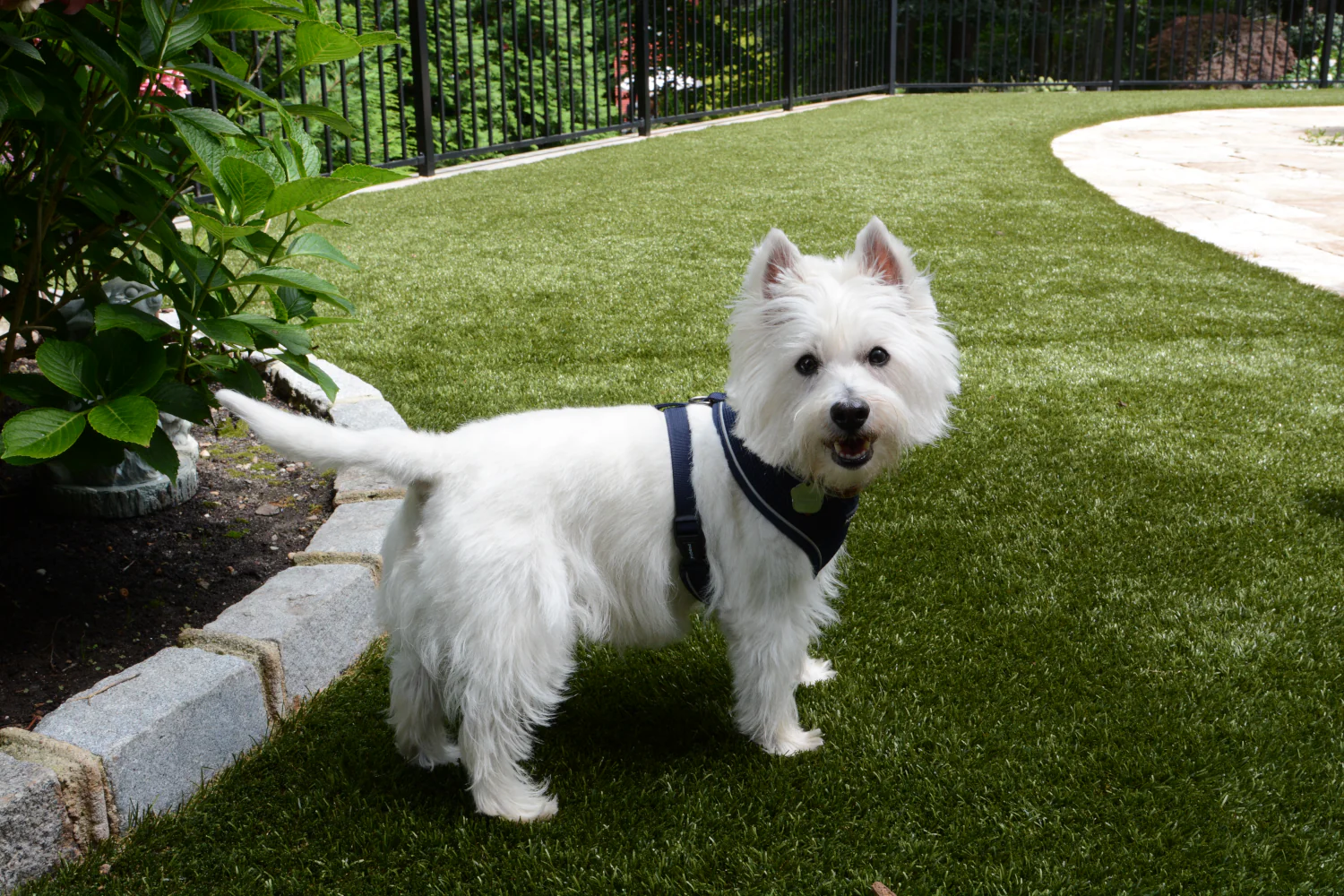How to Avoid Pet Turf Mistakes

You picked artificial grass for the minimal maintenance and tidy aesthetics — wise decision. But pets change the equation. Here’s a fresh take on the most common problems that happen to fake grass for dogs and exactly what to do about each of them, in simple steps.
1. LEAVING WASTE BEHIND
What happens: A missed mess hardens, spreads, or seeps into the infill.
Why it matters: Dried messes can harbor germs and cause lasting marks.
Fast fix: Remove and throw away as soon as you can. If traces are left, use a soft brush and a hose to lift it out.
Habit to build: Keep a pooper scooper and covered container near the yard for quick cleanups.
2. CONCENTRATED URINE SPOTS
What happens: Dogs favor a few spots and urine collects.
Why it matters: Lingering stink and discolored infill may follow.
Fast fix: Rinse with a hose from time-to-time to prevent buildup, especially if rainfall is scarce. For tough urine scent, a enzyme deodorizer made for artificial turf might be necessary when using standard sand infill. Using odor-resistant SWG/Shaw K9 sane eliminates all dog urine or ammonia smells.
Preventive move: Rotate play zones or use distractions to spread traffic around.
3. DIGGING, CHEWING, AND NAIL DAMAGE
What happens: Dogs dig holes, gnaw turf, or their nails snag seams.
Why it matters: Rips, loose edges, and pulled fibers wear it out early and cause hazards.
Fix: Keep claws short and re-secure any lifted edges with landscaping stakes or adhesive recommended by the turf maker.
Prevention: Give dogs a dedicated digging area and provide chew toys.
4. WATER DRAINAGE ISSUES
What happens: Water gathers after storms or heavy use.
Why it matters: Puddles promote mold and feel unpleasant for pets.
Fast fix: Clean out debris from drains. Lightly lift turf edges near drains to check for blockages.
When to call a pro: If the same spot puddles after many rains, the base may need regrading.
5. FLATTENED TURF FIBERS
What happens: Busy play areas start to look worn and crushed.
Why it matters: Compacted infill traps dirt and debris and reduces cushioning.
Fast fix: Rake fibers upright with a soft-bristle broom.
Routine: Brush heavily used turf once a month to keep blades upright.
6. USING THE WRONG CLEANING PRODUCTS
What happens: Strong chemicals break down the backing and fibers.
Why it matters: Discoloration, weakened seams, and reduced turf life.
Fast fix: Flush with water thoroughly and use pet-safe gentler turf cleaners. A natural vinegar and water mix works for many odor issues.
Note: Avoid strong chemicals and wire bristles.
QUICK CARE CHECKLIST
- Pick up waste within a few hours
- Rinse frequent urine spots at least once a week
- Brush fibers in busy spots monthly
- Give chews on a mat
- Choose pet-safe products for synthetic turf
- Inspect drainage after heavy storms
NEED A DEEP PROFESSIONAL CLEANING
Everyday care can keep your artificial turf for dogs smelling fresh and appearing well-kept. If you prefer assistance — from a deep clean to examining drainage or refreshing infill — Southwest Greens can step in and handle the heavy lifting so your yard remains pet-friendly and guest-ready. Get in touch, and we’ll create a care plan for your turf.
